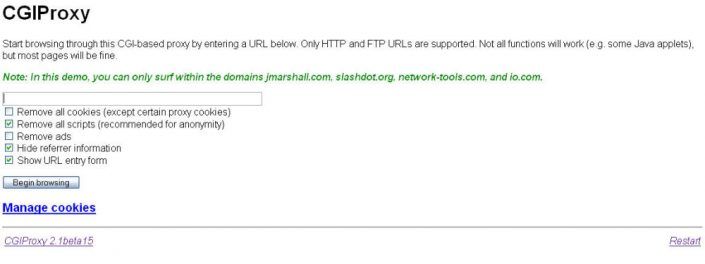- ProxyLib /
- Proxy Insights Hub /
- CGI Proxies
Understanding CGI Proxies: Key Features, Benefits, and Practical Insights
When exploring tools for online privacy, CGI proxies stand out as both simple and powerful solutions. These tools don’t just mask your IP address—they act as gateways to a more open and secure internet experience. But what makes them unique? How do they compare to other technologies like VPNs or Tor? Let’s dive deep into the world of CGI proxies, uncovering their history, mechanics, real-world applications, limitations, alternatives, and future trends.

A Brief History: The Evolution of CGI Proxies
The story of CGI proxies begins in the early 1990s, during the dawn of the dynamic web. Back then, the internet was transitioning from static HTML pages to something far more interactive. The Common Gateway Interface (CGI), developed by the National Center for Supercomputing Applications (NCSA), was a game-changer. It allowed web servers to execute external programs, paving the way for dynamic content generation.
One of the pioneers behind CGI was Rob McCool, whose work laid the foundation for modern web applications. By 1995, CGI had evolved significantly, enabling websites to interact with databases and deliver personalized user experiences. While newer technologies like PHP, ASP.NET, and JavaScript frameworks have since taken center stage, CGI’s legacy lives on—especially in the realm of proxies.
For example, CGI proxies owe their existence to this early innovation. They leverage the same principles of server-side scripting to act as intermediaries between users and the web, making them a fascinating blend of old-school technology and modern utility.
How CGI Proxies Work: A Technical Deep Dive
At their core, CGI proxies serve as intermediaries between users and web servers. When you request a webpage through a CGI proxy, it fetches the content on your behalf and delivers it to your browser. This process hides your IP address, effectively anonymizing your online activity.
Key Features of CGI Proxies
- Web-Based: No software installation required; simply visit a proxy website.
- Dynamic Content Handling: Transforms requests into formats that servers can easily process.
- Protocols Supported: Primarily HTTP and HTTPS, with some supporting FTP.
Example Code: Simplified CGI Script
Below is an example of how a CGI script might handle an HTTP request:
#!/usr/bin/perl use CGI; my $cgi = CGI->new; print $cgi->header('text/html'); print ""; print "You requested: " . $cgi->param('url'); # Fetch and display content from the requested URL print "";
This script demonstrates the basic functionality of a CGI proxy: receiving a request, processing it, and returning the result.

Types of CGI Proxies: Finding the Right Fit
CGI proxies come in various types, each suited to different use cases. Below is a table summarizing the main types:
| Type | Description | Use Case |
|---|---|---|
| Transparent Proxies | Do not hide the user’s IP address but cache data to improve load times. | Performance enhancement, not privacy. |
| Anonymous Proxies | Hide the user’s IP address, providing reasonable anonymity. | Browsing without revealing identity. |
| High-Anonymity Proxies | Conceal both the user’s IP and the fact that a proxy is being used. | Accessing sensitive information securely. |
| Web-Based Proxies | Easy-to-use interfaces requiring no setup. | Quick access to blocked content. |
| Form-Based Proxies | Require users to fill out forms to route requests. | Greater control over requests. |
Security Considerations: Proceed with Caution
Using CGI proxies isn’t without risks. Misconfigured proxies can expose you to malware, data interception, or even botnets. For instance, researchers discovered vulnerabilities in some CGI-based proxies that allowed attackers to inject malicious scripts into web pages.
Tips for Secure Usage
- Choose Reputable Services: Opt for well-known and trusted proxy providers.
- Keep Scripts Updated: Regularly update your proxy scripts to patch vulnerabilities.
- Use HTTPS: Always ensure the proxy supports secure connections.
- Limit Capabilities: Restrict the proxy’s functionality to only what’s necessary.
Why Use CGI Proxies? Real-World Benefits
CGI proxies offer several compelling advantages:
- Anonymity: Mask your IP address to browse without leaving a digital footprint.
- Bypass Restrictions: Access geo-blocked content or restricted websites.
- Traffic Management: Balance network loads for smoother performance during peak times.
Drawbacks: The Flip Side of the Coin
Despite their benefits, CGI proxies have notable limitations:
- Latency: Routing traffic through a proxy can slow down browsing speeds.
- Security Risks: Poorly configured proxies can expose users to malware or data breaches.
- Legal Concerns: Using proxies to circumvent restrictions may have legal consequences.
CGI Proxies vs. Other Technologies
How do CGI proxies compare to other tools like SOCKS proxies, VPNs, or Tor? Below is a comparison table:
| Technology | Advantages | Disadvantages |
|---|---|---|
| CGI Proxies | Lightweight, easy to set up, sufficient for basic tasks. | Limited security, slower speeds. |
| SOCKS Proxies | Operate at a lower level (TCP/UDP), highly versatile. | Requires configuration, less user-friendly. |
| VPNs | Encrypt all traffic, provide robust privacy. | Slower speeds, often paid services. |
| Tor | Offers multi-layered anonymity, ideal for sensitive activities. | Extremely slow, resource-intensive. |
The Future of CGI Proxies: Trends and Predictions
Looking ahead, CGI proxies are likely to evolve with advancements in encryption, AI-driven threat detection, and scalability. New types of proxies tailored for streaming or IoT devices could emerge, offering even more versatility.
However, some experts argue that CGI proxies are becoming obsolete due to their reliance on outdated technology. Modern alternatives like Cloudflare Workers or WebSocket-based proxies offer better performance and security.
Glossary of Terms
- HTTP/HTTPS
- Protocols used for transmitting web pages.
- Botnet
- A network of infected devices controlled by hackers.
- Geo-Restrictions
- Content blocked based on geographic location.
CGI proxies are a testament to the enduring power of simple, well-designed technology. They may not grab headlines like blockchain or AI, but their ability to enhance privacy and accessibility makes them indispensable.
If you’re considering using CGI proxies:
- Research reputable services.
- Test their security features.
- Explore alternatives like VPNs or Tor if needed.
Verified proxy expert
-

Bulatov Roman
Roman Bulatov brings 15+ years of hands-on experience:
- Web Infrastructure Expert: Built and scaled numerous data-heavy projects since 2005
- Proxy Specialist: Designed and deployed a distributed proxy verification system with a daily throughput capacity of 120,000+ proxies across multiple performance and security metrics.
- Security Focus: Creator of ProxyLib's verification methodology
- Open Internet Advocate: Helps journalists and researchers bypass censorship
"I created ProxyLib after years of frustration with unreliable proxies - now we do the hard work so you get working solutions."